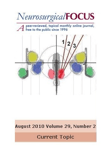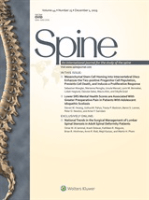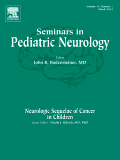
Neurochirurgie
Scope & Guideline
Fostering Excellence in Neurological Innovations
Introduction
Aims and Scopes
- Clinical Neurosurgery:
The journal covers a wide array of clinical topics within neurosurgery, including surgical management techniques for various conditions such as tumors, trauma, and congenital anomalies. - Pediatric Neurosurgery:
There is a strong emphasis on pediatric neurosurgery, addressing unique challenges and surgical interventions tailored to children, including epilepsy surgeries and management of congenital disorders. - Innovative Techniques and Technologies:
The journal highlights advancements in surgical techniques and technologies, such as the use of endoscopic methods, intraoperative imaging, and minimally invasive approaches. - Research Methodology and Evidence-Based Practice:
'Neurochirurgie' emphasizes the importance of robust research methodologies, systematic reviews, and meta-analyses to inform clinical practices and improve patient outcomes. - Ethics and Professionalism in Neurosurgery:
The journal explores ethical considerations in surgical practice, the impact of socioeconomic factors on treatment outcomes, and the role of neurosurgeons in diverse healthcare settings. - Neurotrauma and Neurocritical Care:
There is a significant focus on the management of traumatic brain injuries and neurocritical care, addressing both acute interventions and long-term rehabilitation strategies.
Trending and Emerging
- Minimally Invasive Neurosurgery:
There is a growing trend towards minimally invasive surgical techniques, with increasing publications focusing on innovative approaches that reduce recovery time and complications. - Neurotechnology and Robotics:
The incorporation of neurotechnology, including robotics and advanced imaging techniques, is gaining traction, highlighting the journal's commitment to modernizing surgical practice. - Personalized Medicine and Genomics in Neurosurgery:
Emerging themes around personalized medicine and genomic research are becoming more prominent, indicating a shift towards tailored treatment strategies based on individual patient profiles. - Neurorehabilitation and Postoperative Care:
An increasing number of studies are focusing on neurorehabilitation and the long-term outcomes of surgical interventions, emphasizing the importance of comprehensive care beyond the operating room. - Ethical Considerations and Health Disparities:
The journal is increasingly addressing ethical issues in neurosurgery and exploring health disparities, reflecting a broader societal concern for equity in healthcare access and treatment.
Declining or Waning
- Historical Perspectives in Neurosurgery:
There has been a noticeable decrease in papers that focus on historical accounts or retrospective analyses of neurosurgical practices, suggesting a shift towards more contemporary issues and techniques. - Basic Neuroscience Research:
Although foundational neuroscience is crucial, there appears to be a waning interest in basic science studies that do not directly translate into clinical applications or surgical practices. - Traditional Open Surgical Techniques:
As minimally invasive techniques gain traction, traditional open surgical approaches are less frequently highlighted, indicating a potential decline in interest or relevance in the current surgical landscape. - General Neurosurgery Without Specific Focus:
Papers that address general neurosurgical topics without a specific focus or new insights might be declining, as the journal increasingly favors targeted studies with clear implications for practice. - Non-Surgical Management of Neurosurgical Conditions:
There seems to be a decrease in publications focused on conservative or non-surgical management strategies, as the journal emphasizes surgical interventions and outcomes.
Similar Journals

Brazilian Neurosurgery-Arquivos Brasileiros de Neurocirurgia
Transforming Research into PracticeBrazilian Neurosurgery-Arquivos Brasileiros de Neurocirurgia, published by GEORG THIEME VERLAG KG, is a distinguished peer-reviewed open access journal that has been making significant contributions to the field of neurosurgery since its transition to open access in 2015. This Brazilian journal, which is accessible to a global audience, aims to disseminate high-quality research articles, reviews, and case reports that enhance the understanding and practice of neurosurgery and clinical neurology. Despite its current ranking in the Q4 category for both neurology and surgery in 2023, the journal is committed to improving its impact and accessibility for researchers, medical professionals, and students worldwide. As an important platform for innovative ideas and discussions, it takes pride in publishing scientifically rigorous content that informs and shapes the future of neurosurgical practices. With the rise of open access publishing, Brazilian Neurosurgery aligns itself with contemporary trends, making vital research readily available to its diverse readership while nurturing academic collaborations within the neurosurgical community.

Neurosurgical Focus
Shaping the Future of Neurological SurgeryNeurosurgical Focus, an esteemed journal published by the American Association of Neurological Surgeons, stands at the forefront of neurosurgical research and clinical practice. With its ISSN 1092-0684, this peer-reviewed publication has made a significant impact in the fields of Medicine, Neurology, and Surgery, consistently ranking in the top quartile (Q1) across these categories based on the 2023 metrics. The journal, which spans a rich temporal landscape from 2000 to 2024, offers a platform for disseminating vital research findings, insightful reviews, and innovative surgical techniques. While it is not open access, its high Scopus rankings—40th out of 551 in Medicine & Surgery and 97th out of 400 in Neurology—highlight its broader influence and the quality of research it curates. As an essential resource for researchers, clinicians, and students, Neurosurgical Focus is dedicated to advancing the field of neurosurgery and fostering intellectual discourse within the community.

Innovative Surgical Sciences
Pioneering breakthroughs in surgical research.Innovative Surgical Sciences, published by WALTER DE GRUYTER GMBH, is a leading open-access journal based in Germany that has been at the forefront of surgical research since its inception in 2016. With a focus on fostering innovation and advancements in the field of surgery, the journal is recognized for its high-impact contributions, currently holding a commendable Q2 category rank in Surgery and ranking #67 out of 551 in the Scopus Medicine Surgery category, placing it in the 87th percentile. This periodical not only facilitates the broad dissemination of cutting-edge surgical studies but also promotes accessibility, allowing researchers, professionals, and students to engage with the latest findings without barriers. The journal’s impactful scope is expected to converge through 2024, ensuring relevance in a rapidly evolving medical landscape. The integration of rigorous peer review and a commitment to open dialogue makes Innovative Surgical Sciences an essential resource for anyone invested in the surgical sciences.

BRITISH JOURNAL OF ORAL & MAXILLOFACIAL SURGERY
Transforming the landscape of oral surgery through research.The British Journal of Oral & Maxillofacial Surgery, published by Churchill Livingstone, is a leading international journal dedicated to the advancement of knowledge and practice in the field of oral and maxillofacial surgery. With a focus on disseminating high-quality research from 1984 to the present, this esteemed journal holds a significant position within the medical community, reflected in its impressive rankings in Scopus, including Q2 status in oral surgery, otorhinolaryngology, and general surgery. This journal is essential for researchers, practitioners, and students involved in related disciplines, providing them with valuable insights and updates on clinical practices, innovative techniques, and emerging trends in the field. While it currently does not offer open access options, its rigorous peer-review process ensures that only the most impactful articles contribute to the ongoing discourse in oral and maxillofacial surgery. With its base in the United States and a global readership, the British Journal of Oral & Maxillofacial Surgery continues to be a cornerstone for those aiming to elevate their personal expertise and the standard of care within their practices.

NEUROSURGERY
Fostering Collaboration in Neurosurgical Research.NEUROSURGERY, published by Lippincott Williams & Wilkins, stands as a foremost journal in the field of clinical neurology and surgery, reflecting a commitment to advancing knowledge and practice through high-quality research and discourse. With an impact factor indicative of its scholarly significance and a remarkable Scopus ranking placing it in the Q1 category for both neurology and surgery, this journal provides a vital platform for clinicians, researchers, and students to explore cutting-edge developments and innovations. NEUROSURGERY publishes peer-reviewed articles that span the spectrum of neurosurgical practice, from basic science discoveries to clinical applications, fostering a collaborative exchange of ideas and methodologies. Since its inception in 1977, the journal has maintained a focus on delivering substantive research that informs practice and enhances patient care, making it an essential resource for professionals dedicated to the fields of neurology and surgery. The journal is based in India, and while it currently does not offer open access options, its rich archive from 1977 to 2024 ensures a comprehensive repository of knowledge for those engaged in this critical area of medicine.

JBJS Reviews
Your Gateway to Cutting-Edge Orthopedics and Sports Medicine.JBJS Reviews is a premier academic journal published by Lippincott Williams & Wilkins, dedicated to the fields of Orthopedics, Sports Medicine, and Surgery. With an impactful presence in the medical community, the journal is recognized for its high-quality and peer-reviewed content that boasts an impressive ranking, including a Q1 quartile status in both Orthopedics and Surgery as of 2023. This esteemed publication is indexed in Scopus, achieving a rank of #115 out of 551 in Medicine Surgery and #88 out of 321 in Medicine Orthopedics and Sports Medicine. Since its inception in 2014, JBJS Reviews has served as a critical platform for advancing knowledge and fostering innovation, offering researchers, professionals, and students valuable insights into the latest advancements, evidence-based practices, and trends in the orthopedic field. Although not currently offering open access, JBJS Reviews remains a pivotal resource for those aiming to stay at the forefront of orthopedic and surgical excellence.

Brain and Spine
Connecting minds: Bridging the gap between brain function and spinal health.Brain and Spine is a premier academic journal published by ELSEVIER, dedicated to advancing the fields of neuroscience and neurology. With its unique focus on the complex interactions between brain function and spinal health, this journal serves as an essential resource for researchers, clinicians, and students alike. Though currently lacking an official impact factor, its ranking within Scopus highlights its relevance, placing it in the 25th percentile for neuroscience (miscellaneous) and the 23rd percentile within neurology, indicating that while it is a developing journal, it holds potential for significant contributions to the field. Operating under open-access principles, it aims to disseminate valuable findings widely, ensuring that novel insights into neurological health are accessible to a global audience. Brain and Spine seeks to foster interdisciplinary collaboration and innovation, making it an invaluable platform for those striving to enhance our understanding of the brain and spinal cord's intricate functions and interdependencies.

SPINE
Empowering research in Orthopedics, Neurology, and Sports Medicine.SPINE, published by Lippincott Williams & Wilkins, is a leading academic journal in the fields of Orthopedics, Neurology, and Sports Medicine. Established in 1976, this reputable journal has made significant contributions to advancing clinical and scientific knowledge, with its impactful research evidenced by its prestigious Q1 classification across three essential categories in 2023 and a notable ranking of #51 in Orthopedics and Sports Medicine and #117 in Clinical Neurology as per Scopus. SPINE aims to disseminate high-quality research articles, reviews, and clinical studies that address cutting-edge topics and challenges in spine-related health, thereby serving as an invaluable resource for researchers, healthcare professionals, and students alike. With its commitment to rigorous peer review and a wide readership, SPINE continues to be at the forefront of innovations in spine health & disease from 1976 to 2024, upholding its reputation as a catalyst for progress in the medical community.

Seminars in Pediatric Neurology
Advancing knowledge in pediatric neurology.Seminars in Pediatric Neurology, published by W B SAUNDERS CO-ELSEVIER INC, is a prestigious journal dedicated to the evolving field of pediatric neurological disorders. Since its inception in 1994, this peer-reviewed journal has provided critical insights and cutting-edge research to support healthcare professionals in enhancing the quality of care for children with neurological conditions. With an impressive 2023 impact factor and a Q2 ranking in both the clinical neurology and pediatrics categories, it stands as a vital resource, fostering the dissemination of knowledge among researchers and clinicians alike. Featuring articles that explore a range of topics from clinical trials to innovative treatment modalities, this journal empowers practitioners with the latest findings in pediatric neurology. While primarily subscription-based, it plays a key role in bridging the gap between academia and clinical practice, making it an indispensable tool for anyone involved in the care and treatment of pediatric neurological patients.

Chinese Journal of Traumatology
Enhancing understanding of trauma through open access knowledge.Chinese Journal of Traumatology, published by Elsevier Inc, serves as a pivotal platform for the dissemination of cutting-edge research in the fields of Emergency Medicine, Orthopedics, and Surgery. With an impressive Q2 ranking in several medical categories and an Open Access model since 2010, this journal ensures that critical findings reach a broad audience, fostering collaboration and advancement among researchers, healthcare professionals, and students alike. The journal addresses trauma-related issues, encompassing innovative methodologies and clinical practices while promoting the latest breakthroughs in public health. With a mission to enhance the understanding and treatment of traumatic conditions, the Chinese Journal of Traumatology significantly contributes to the global knowledge base, making it an essential resource for anyone involved in trauma care and research.